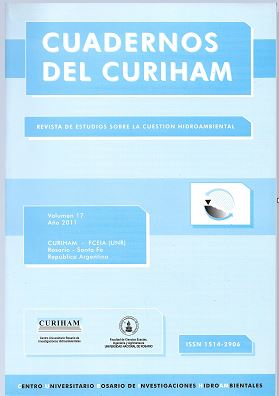Evolución temporal de la porosidad y la conductividad hidráulica de una roca sometida a procesos de disolución
DOI:
https://doi.org/10.35305/curiham.v17i0.52Keywords:
Porosity, Hydraulic conductivity, DissolutionAbstract
Dissolution processes can affect the macroscopic properties of the rock and, as a consequence, modify the flow patterns at large time scale. In this study we present a theoretical model for describing temporal evolution of porosity and hydraulic conductivity during rock dissolution by reactive fluids. The derivation of the model is based on the assumption that the porosity of the rock can be represented by a group of parallel capillary tubes with variable radius and a fractal cumulative size distribution. Using this fractal description and well-known physical properties we obtain analytical expressions for both porosity and hydraulic conductivity that depend on the maximum pore radius and the fractal dimension. These expressions can be easily combined to obtain a formula similar to the Kozeny-Carman equation. Finally, assuming a constant dissolution reaction it is possible to derive closed-form analytical expressions for porosity and hydraulic conductivity that depend explicitly on the time. The temporal evolution predicted by the proposed model is compared with a laboratory experiment performed on a low-permeability sandstone core.
Downloads
Downloads
Published
How to Cite
Issue
Section
License
Copyright (c) 2011 Luis Guarracino, Jesús Carrera

This work is licensed under a Creative Commons Attribution-NonCommercial-ShareAlike 4.0 International License.



























